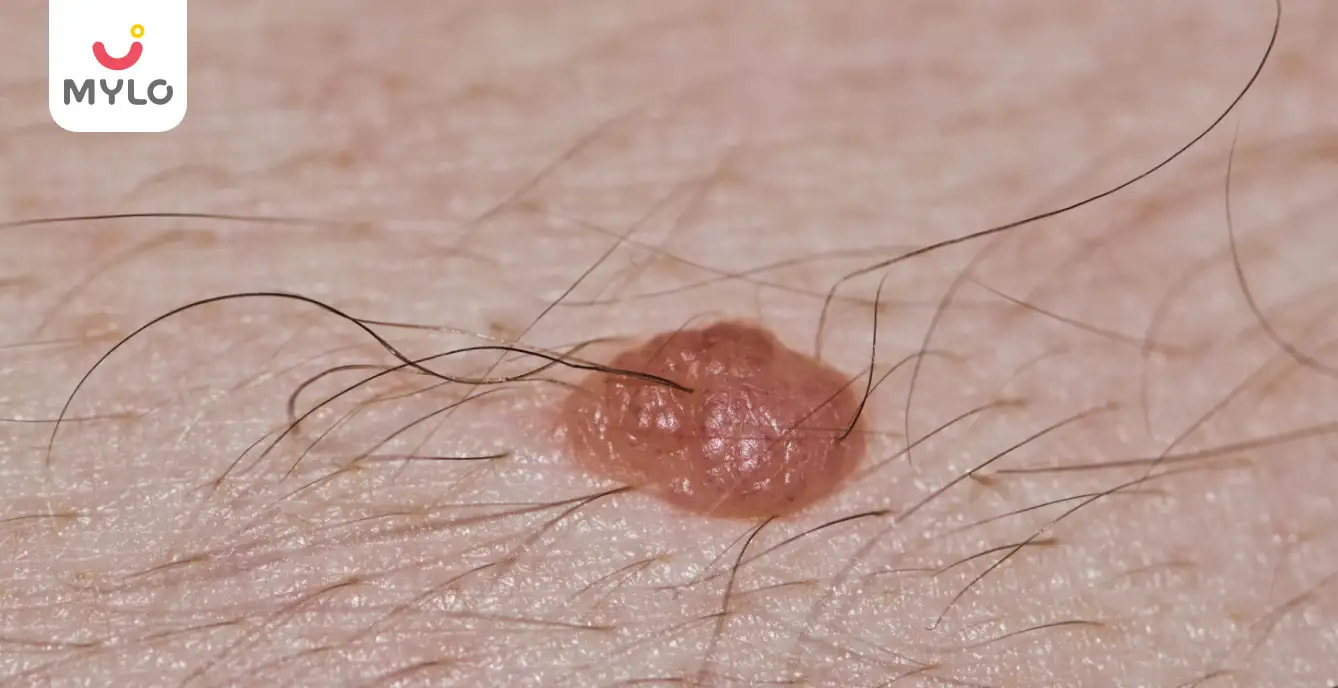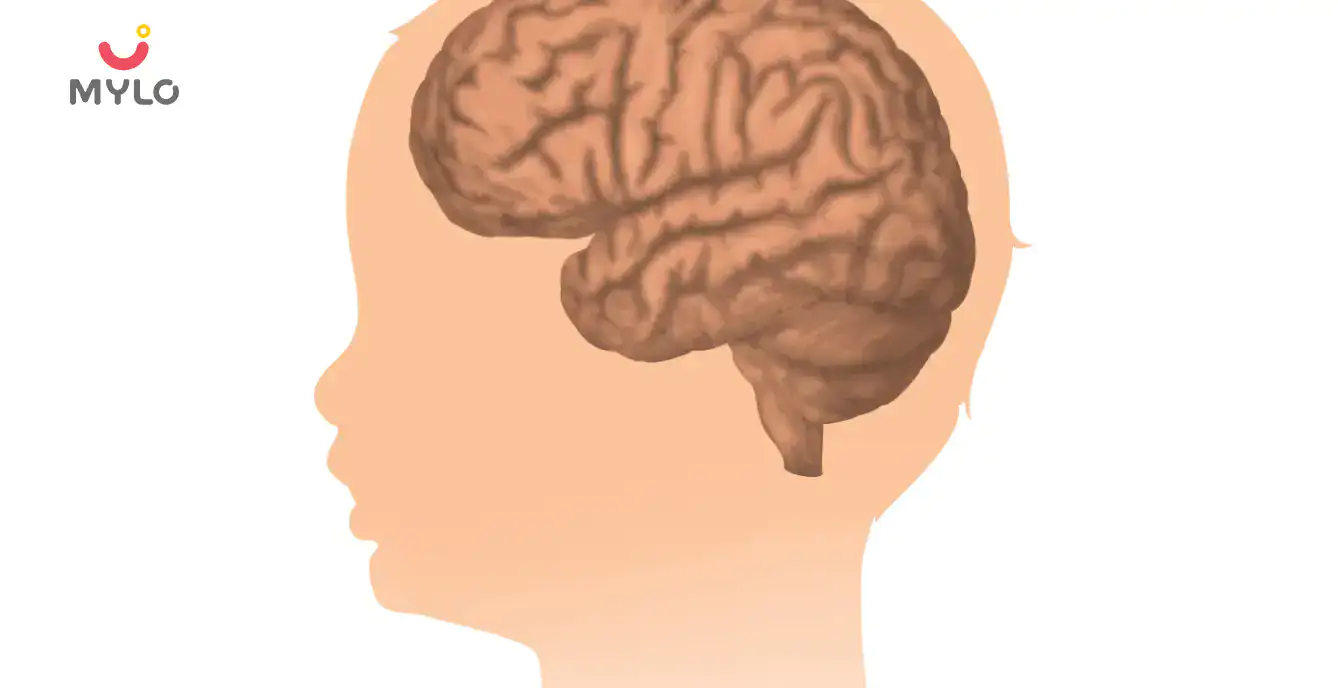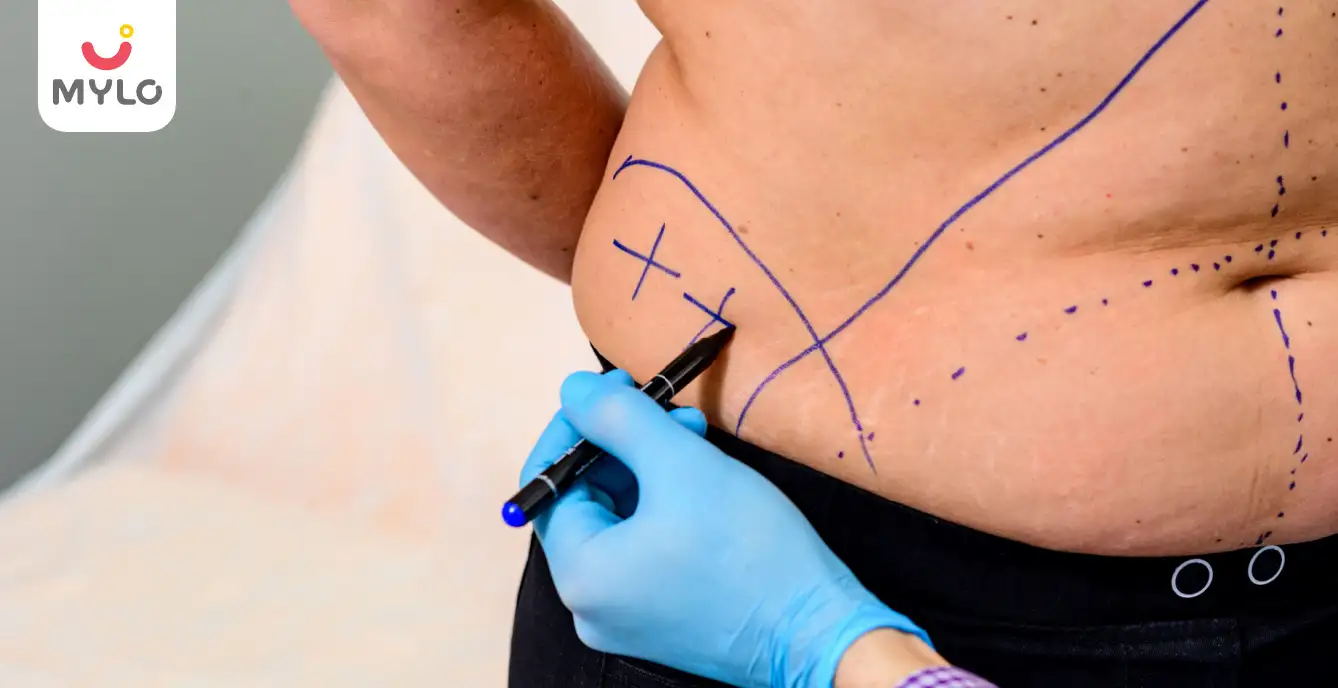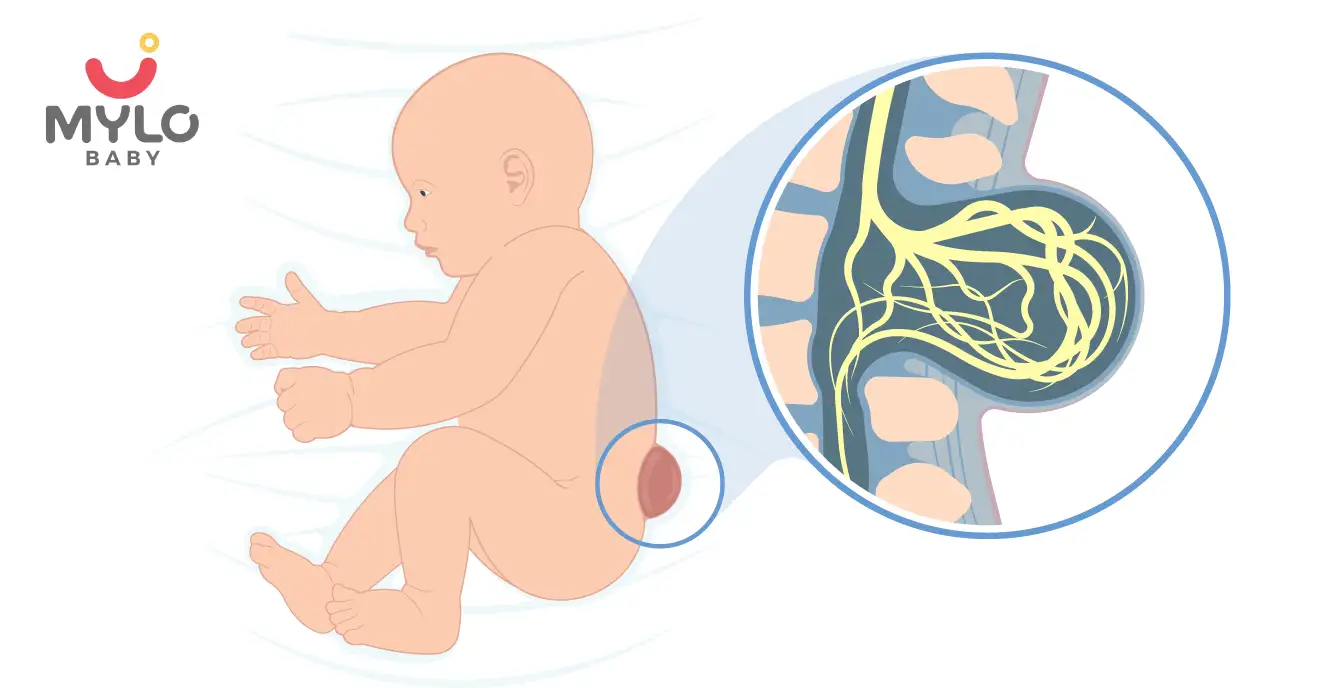Home

Giant Congenital Melanocytic Nevus: Causes, Symptoms, & Treatment
In this Article

Pregnancy
Giant Congenital Melanocytic Nevus: Causes, Symptoms, & Treatment
Updated on 10 May 2023
The term Giant Congenital Melanocytic Nevus (GCMN) itself may be enough to scare you, and while this can be a frightening diagnosis, it is important to stay informed and be aware of the causes, symptoms, and treatments associated with GCMN to get ahead of it. Understanding the condition can deliver you the comfort of knowing that you can receive treatments and live a long, healthy life.
What is giant congenital melanocytic nevus?
A giant congenital melanocytic nevus is an abnormally large, dark mole that is present at birth or develops shortly afterwards. It is caused by an overgrowth of melanocytes, cells that produce pigment in the skin. Giant congenital melanocytic nevi are usually larger than 6 inches in diameter and can be found anywhere on the body. They may be accompanied by other birthmarks or skin lesions. These nevi can be associated with an increased risk of skin cancer and other health conditions. Therefore, regular medical follow-up is important.
How common is giant congenital melanocytic nevus?
Giant congenital melanocytic nevi are rare, occurring in only 1 in 20,000 newborns.
Causes of melanocytic nevus
While the exact cause of melanocytic nevi is unknown, several factors are believed to play a role in their development.
-
One of the most common causes of melanocytic nevi is genetics. The number and placement of moles on the body can also be inherited. However, a giant congenital melanocytic nevus may not be inherited but caused due to a mutation.
-
Exposure to ultraviolet (UV) rays is another potential cause of melanocytic nevi. Prolonged exposure to UV radiation, either from the sun or tanning beds, can increase the formation of melanocytes which can then lead to the formation of moles.
-
In some cases, hormonal changes may also cause melanocytic nevi.
Though melanocytic nevi can be caused by a variety of factors, it is important to remember that they are generally harmless and do not require treatment. However, if you are concerned about the appearance of your moles, it is best to consult an expert dermatologist.
Symptoms of melanocytic nevus
A melanocytic nevus can be flat or raised and is typically brown or black. It often has an irregular shape and can be as small as a few millimetres or as large as a few centimetres.
The symptoms of a melanocytic nevus depend on the size and location of the mole. In some cases, the mole may have hair growing from it.
In some cases, a melanocytic nevus can become cancerous. If you notice any changes in the mole, such as a change in colour, size, shape, or texture, make an appointment with your doctor immediately. It is also important to protect your skin from the sun, as sun exposure can increase the risk of melanoma, a type of skin cancer.
Treatment for melanocytic nevus
Treatment for melanocytic nevi depends on the type, size, and location of the mole, as well as the age of the patient, overall health, and personal preferences.
For harmless moles, no treatment may be necessary. Instead, your doctor may recommend monitoring the mole for any changes. If the melanocytic lesion is at risk of becoming cancerous, your doctor may recommend surgically removing it. Depending on the type and depth of the mole, this may involve shave excision, in which the mole is shaved off with a scalpel, or surgical excision, in which the mole is cut out with a scalpel and the surrounding skin is stitched together. If a mole is very large, more extensive surgery may be needed.
How to diagnose melanocytic nevus?
Diagnosing a melanocytic nevus is typically done by visual inspection. In some cases, a biopsy may be necessary to accurately diagnose the condition.
The doctor may also use a dermatoscope to get a better look at the lesion. A dermatoscope is a magnifying device that helps better visualise the lesion and its characteristics.
Inherited giant congenital melanocytic nevus
Inherited giant congenital melanocytic nevus is a rare condition that usually appears at birth or during infancy and is caused by a genetic mutation. It is characterised by a giant brown or black patch of skin that can cover a large area of the body.
This condition can be physically and emotionally difficult to manage. It is important for people with inherited giant congenital melanocytic nevus to seek medical advice about their condition. Treatment typically includes surgical removal or laser ablation of the lesion, as well as regular follow-up care.
Additional names for this illness
The medical community has several additional names for giant congenital melanocytic naevus (GCMN), including “bathing trunk nevus,” “giant hairy nevus,” “pigmented hairy epidermal nevus,” and “giant pigmented nevus.” These names suggest the size and type of birthmark but should not be used to stigmatise the condition.
Living with congenital giant melanocytic nevus can be challenging, but it is important to remember that support groups and other resources are available to help you manage your condition.



Written by
Parul Sachdeva
A globetrotter and a blogger by passion, Parul loves writing content. She has done M.Phil. in Journalism and Mass Communication and worked for more than 25 clients across Globe with a 100% job success rate. She has been associated with websites pertaining to parenting, travel, food, health & fitness and has also created SEO rich content for a variety of topics.
Read MoreGet baby's diet chart, and growth tips

Related Articles
Related Questions
Influenza and boostrix injection kisiko laga hai kya 8 month pregnancy me and q lagta hai ye plz reply me

Hai.... My last period was in feb 24. I tested in 40 th day morning 3:30 .. That is faint line .. I conculed mylo thz app also.... And I asked tha dr wait for 3 to 5 days ... Im also waiting ... Then I test today 4:15 test is sooooo faint ... And I feel in ma body no pregnancy symptoms. What can I do .

Baby kicks KB Marta hai Plz tell mi

PCOD kya hota hai

How to detect pcos

RECENTLY PUBLISHED ARTICLES
our most recent articles

Fears & Phobias
Tokophobia: How to Manage Your Phobia of Pregnancy & Childbirth

Low BP in Pregnancy: Symptoms, Effects & Treatments
Twins & Triplets
Helping your twins to sleep at the same time

Brain Development
Baby Brain Development: What You Should Know

Medical Procedures
Tummy Tuck (Abdominoplasty) Procedure, Risks, Preparation & Recovery

Developmental Disorders
Spina Bifida: Causes, Symptoms & Treatment
- Diastasis Recti: Causes, Symptoms, Risks & Preventions
- Opioid Overdose, Risk & Prevention
- Is Pregnancy After 35 Right for You? A Comprehensive Guide
- Clubfoot (Talipes Equinovarus): Meaning, Symptoms & More
- RSV (Respiratory Syncytial Virus): Symptoms, Causes & Treatment
- Loose Vagina: Learn How To Tighten Your Vagina Naturally
- Umbilical Cord Prolapse Causes, Symptoms & Treatment
- Bipolar Disorder: Causes, Symptoms, Risks & Treatment
- Sinus Infection During Pregnancy Causes & Treatment
- Intrauterine Growth Restriction (IUGR) in Pregnancy
- APGAR Score: Meaning & How it is Performed
- Dyspareunia (Painful Intercourse): Causes & Treatment
- Short Bowel Syndrome: Causes, Symptoms, and Treatment
- Pelvic Inflammatory Disease (PID): Symptoms, Causes & Treatment


AWARDS AND RECOGNITION

Mylo wins Forbes D2C Disruptor award

Mylo wins The Economic Times Promising Brands 2022
AS SEEN IN
















- Mylo Care: Effective and science-backed personal care and wellness solutions for a joyful you.
- Mylo Baby: Science-backed, gentle and effective personal care & hygiene range for your little one.
- Mylo Community: Trusted and empathetic community of 10mn+ parents and experts.
Product Categories
baby carrier | baby soap | baby wipes | stretch marks cream | baby cream | baby shampoo | baby massage oil | baby hair oil | stretch marks oil | baby body wash | baby powder | baby lotion | diaper rash cream | newborn diapers | teether | baby kajal | baby diapers | cloth diapers |








